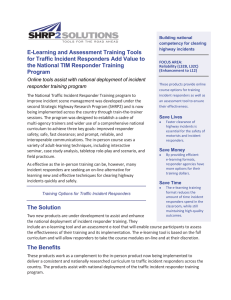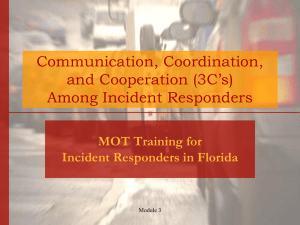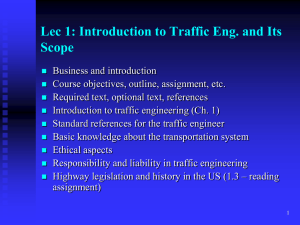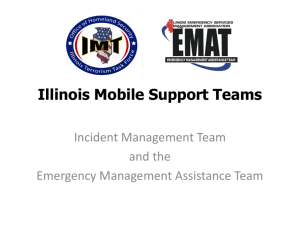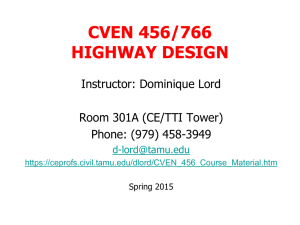MODULE 6 TRAFFIC MANAGEMENT
advertisement
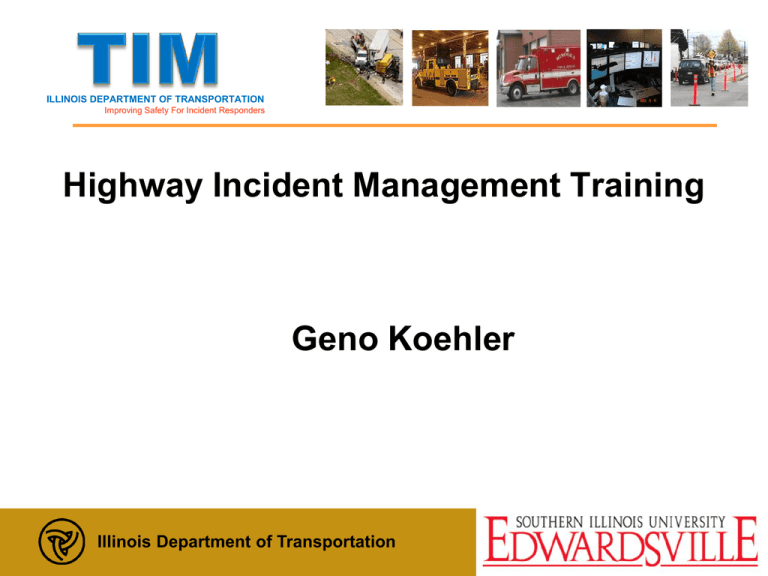
ILLINOIS DEPARTMENT OF TRANSPORTATION Improving Safety For Incident Responders Highway Incident Management Training Geno Koehler Illinois Department of Transportation Update: December, 2012 Overview • Introduction • In-Class Modules • Online Modules • Training Games • Conclusions 2 Introduction • Developed to reduce responders fatalities • Funded by IDOT and ICT • Developed by Southern Illinois University Edwardsville (SIUE) Source: WISDOT 3 Need Assessment Who trains with other agencies? Train with 4-5 other agencies, 12% Train with 2-3 other agencies, 16% Train with >5 agencies, 3% Train with No other agencies, 50% Train with 1 other agency, 19% 4 Key Stakeholders • Illinois Department of Transportation • Illinois State Toll Highway Authority • Illinois State Police • Federal Highway Administration • Office of the State Fire Marshal • Towing and Recovery Association of America 5 Development • Project began in 2009 • Objectives • Reduce secondary crashes • Follow NIMS guidelines • Follow MUTCD guidelines • Include legal options • Include operational agreements 6 Target Audience Law Enforcement Patrol, Supervisors, Accident Investigators/Reconstructionists Fire Department Fire personnel, Officers, Rescue/Extrication crews, HazMat teams Emergency Medical Duty personnel, Supervisors, Air Medical crews Tow & Recovery Operators Light-, Medium-, & Heavy-duty Operators, Supervisors Highway Department Municipal, County, State DOT, Courtesy Patrol, Tollway Communication 911 Centers, Traffic Operations Centers, Transportation Management Centers (TMC) 7 In-Class Modules • Module 1: Introduction • • • • Module 2: Role and Responsibilities Module 3: 3C’s Module 4: Initial Scene Response Module 5: Incident Classification • Module 6: Traffic Management • Module 7: Clearance/Termination • Module 8: Case Studies and Table Top Exercises 8 Online Modules • Module 10: Introduction to Incident Management • • • • Module 20: Laws and Policies Module 30: Highway Terms Module 40: Roles and Responsibilities Module 50: Incident Classification • Module 60: Temporary Traffic Control I • Module 70: Temporary Traffic Control II • Module 80: Introduction to Safe Parking • Module 90: TRAA Vehicle Classification • Module 100: Electric Vehicle Training • Module 110: Cable Stay Systems 9 Training Game 10 Traffic Incident Management Challenge • Educate users who are new to highway parking • Refresh knowledge for those who have been working for years • Provide safe ways to test highway parking procedures • Encourage user ability to interact with others while responding 11 Conclusions • SHRP II compliant • Endorsed by the FHWA in 2012 • Improved the safety of responders 12
